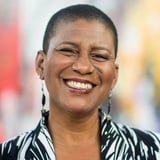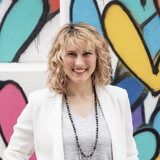Summary
Making design simple in siloed and dated governmental organization with a baggage of tradition and slumped public reception is not an easy task. This talk presents a case study transforming a large government-regulated gambling monopoly from the product-driven world of the past into the emergent and rapidly shifting markets where the customer is placed front and center. How to refresh an organization without causing more obstacles? Organizing for continuous learning and allowing natural competence development can be achieved with reviewing the foundations of the business model and design organization. This talk presents solutions from the presented case study.
Key Insights
-
•
A dated company vision hinders alignment and adaptability in fast-changing industries like gambling.
-
•
Co-creating vision statements with the entire design org and basing them on customer interviews improves focus.
-
•
Regulation to prevent addictive gaming can directly conflict with traditional design goals like engagement.
-
•
Organizational resilience relies heavily on fulfilling psychological needs: autonomy, competence, and relatedness.
-
•
Excessive meetings without clear goals decrease productivity; workshops and agendas improve focus and speed.
-
•
Trust enables transparency and information sharing, which are key to scaling design efficiency.
-
•
Remote design workshops succeed more by managing participant focus and agenda than by the tools themselves.
-
•
Low-threshold design methods and toolkits accelerate learning, confidence, and adoption across diverse teams.
-
•
Continuous customer dialogue beyond surveys drives better prioritization and product responsibility.
-
•
Flexible budgeting and continuous projects reduce knowledge loss and improve adaptability over time.
Notable Quotes
"Many obstacles we faced came from inside the organization, not just external factors."
"The red buttons are forbidden to reduce excessive engagement — that runs counter to typical design goals."
"Nobody really knew what we should be reaching for because the vision was outdated."
"People were pushed but had no idea what was expected from them — adaptability was lacking."
"Transparency can be a master source of efficiency when people are trusted to share."
"Every meeting should have a predefined agenda, at least if no clear goal is determined."
"It was not the remote tools that were the challenge, but getting people to focus."
"Organizations are made of people — resilience is an outcome of a successfully organized group."
"Autonomy means having confidence to make choices and affect ways of working."
"Low-threshold peer designing exponentially develops confidence very quickly."
Or choose a question:
















More Videos

"The future of urban living depends on our commitment to environmental justice."
Lena ShenkarenkoCollaborative Wireframing for Creating Team Alignment and Shipping Better Products
October 21, 2020

"It’s more dangerous to do nothing than to do something that’s not super perfect to start."
Bob Baxley Sara Asche Anderson Sharon Bautista Frank Duran Jamie Kaspszak Abbey Smalley Sylas SouzaTheme 4: Discussion
January 8, 2024

"Relationship design is not just what you do but how you do it, focusing on building relationships with customers, employees, and community."
Laine Riley ProkayHow DesignOps can Drive Inclusive Career Ladders for All
September 30, 2021

"You have to be responsible for your viewpoint—you can't claim objectivity and ignore the impact."
Paul Pangaro, PhDSystems Disciplines: Table Stakes for 21st Century Organizations
June 6, 2023

"The conference is not an endpoint, but a path to broadening our understanding of designing with AI."
Uday Gajendar Louis RosenfeldDay 1 Welcome
June 4, 2024

"Start small, add scaffolding, and let momentum do the rest."
Bianca JeffersonFrom Sprints to Systems: Operationalizing Continuous Discovery Through DesignOps
September 10, 2025

"I challenge all of us to pull back from self-congratulations when we hear talk of extractive practices."
Chris GeisonTheme 1 Intro
March 9, 2022

"We encourage canceling programs very fast if research shows lack of need to avoid wasted effort."
Teresa SwinglerLook, Up in the Sky! UX/UI for Aerospace
October 27, 2022

"If you don’t collect data on somebody, they become invisible and nobody should be invisible."
Amy Paris Danielle ThierryDelivering Equity: Government Services for All Ages, Languages, Sexual Orientations, and Gender Identities
December 9, 2021
















